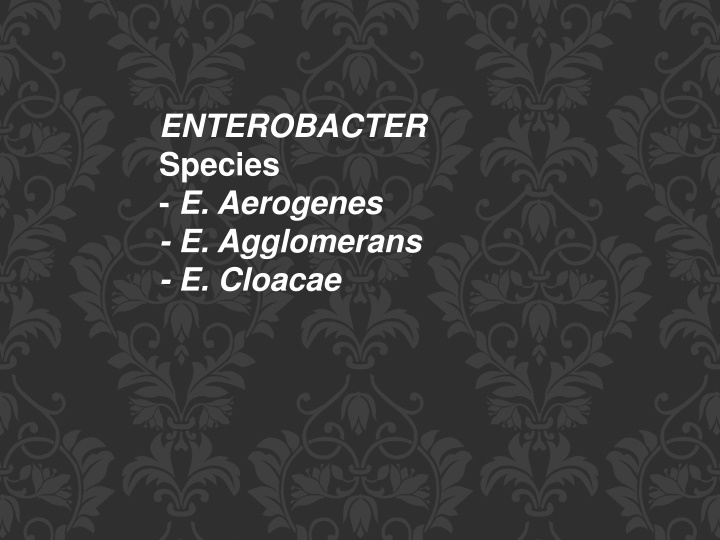
Clinical Significance of Enterobacter Species and Their Associated Diseases
Discover the characteristics and clinical significance of Enterobacter species, including E. aerogenes and E. agglomerans. Learn about their role as opportunistic pathogens, normal flora of the GI tract, transmission methods, and diseases they can cause, such as nosocomial infections and septicemia. Explore treatment options and the importance of proper management to prevent infections.
Download Presentation

Please find below an Image/Link to download the presentation.
The content on the website is provided AS IS for your information and personal use only. It may not be sold, licensed, or shared on other websites without obtaining consent from the author. If you encounter any issues during the download, it is possible that the publisher has removed the file from their server.
You are allowed to download the files provided on this website for personal or commercial use, subject to the condition that they are used lawfully. All files are the property of their respective owners.
The content on the website is provided AS IS for your information and personal use only. It may not be sold, licensed, or shared on other websites without obtaining consent from the author.
E N D
Presentation Transcript
ENTEROBACTER Species - E. Aerogenes - E. Agglomerans - E. Cloacae
Characteristics gram rod - encapsulated - motile - non-spore forming - facultative anaerobic - opportunistic pathogen Normal flora of GI tract IMViC: - - + + Citrate +
Clinical significance: Reservoirs - humans (normal flora of the GI tract) - animals - water - soil Transmission - direct contact - fecal-oral - contaminated fomites Toxins - LPS
Diseases Nosocomial Infections - skin infections (folliculitis, cellulitis and impetigo), skin abscesses (pustules, furuncles, carbuncles), and wound infections - bronchopneumonia and pulmonary abscesses - cystitis and renal abscesses (primarily if urinary catheter) - neonatal meningitis and cerebral abscesses - subacute infectious endocarditis - osteomyelitis and arthritis - septicemia Treatment aminoglycosides , tetracyclines


